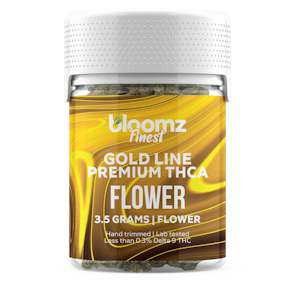
Photo by MOUTHWASH STUDIOS
Chronic pain affects over 50 million Americans, a staggering figure expected to rise as the population ages. Traditional pharmaceuticals bring not only incomplete relief but also concerns over side effects, dependency, and lack of holistic healing.
In response, medical researchers and everyday people alike increasingly examine cannabis as an alternative.
While substantial barriers to access remain in much of the world, great strides have occurred in recent years as reform spreads. Understanding marijuana’s therapeutic effects and products for pain empowers those suffering to evaluate changes to their care plan, which may prove transformative for quality of life.
Examining Marijuana’s Analgesic Effects
Marijuana’s pain-relieving properties stem primarily from two components: THC and CBD.
Delta-9 tetrahydrocannabinol (THC) interacts directly with CB1 endocannabinoid receptors in the central nervous system and peripheral nerves. In addition to altering perception and mood elevation, this relationship reduces the signaling of pain impulses to the brain.
Cannabidiol (CBD) represents the other abundant cannabinoid in cannabis. CBD activates multiple receptor pathways unrelated directly to pain response, like TRPV1, which governs anxiety, inflammation and body temperature. Working in concert, CBD may enhance THC’s pain relief action indirectly through these ancillary impacts.
For chronic pain, in particular, marijuana’s immunomodulation and anti-inflammatory qualities also play vital roles long-term. Where pharmaceuticals mask pain acutely, cannabis facilitates deeper physiological healing, given adequate integration.
Choosing Products For Pain Management

Photo by DANIEL FARÒ
Today’s cannabis marketplace offers a wide selection catering to various needs and preferences. Patients managing pain should weigh key considerations when self-titrating products:
Onset & Duration: Inhalation via smoking/vaping provides near-instant relief, while oral methods take 30-90 minutes. However, inhalation requires re-dosing after 1-3 hours, while edibles and tinctures persist +6 hours. Transdermal patches bridge this gap somewhat in 4-12 hours.
THC & CBD Dosing: Balanced formulations leverage synergy between major cannabinoids. Those with no THC tolerance can start with high CBD varieties to temper its strong psychoactivity. Establishing one’s minimal effective dose through journaling optimizes relief while minimizing “high” feelings if undesired.
Full-Spectrum & Isolates: Full-spectrum concentrates preserving cannabis’ entire chemical profile outperform isolated extracts for pain per studies. This “entourage effect” highlights the influence of lesser-known compounds. However, mixing both may offer customization advantages for patients.
Consumption Method: Inhalation and transdermal products target localized pain, while edibles alleviate general discomfort. Topicals additionally provide analgesic effects without psychoactivity. Patients may find benefits in applying multiple methods day-to-day based on flare-ups.
The Best Weed For Pain Relief

Photo by Elsa Olofsson
THCA Flower Gold Line By Bloomz
Welcome to the gold standard – of relief – with Bloomz’s THCA Flower Gold Line.
These aren’t your ordinary buds; they’re spectacular weed formations that help manage pain and anxiety. Packed with potency, these buds are the VIP pass to an incredible body and mind experience that will make you forget about pain for a while.
With strains like Gobstoppers, Cat Piss, and Lemon Cookie, these little friends are bouquets of relaxation.
Bubba Kush Delta 8 Infused Flower By Top Shelf Hemp
Grown with the care and precision normally reserved for royalty, this hybrid strain not only relaxes but throws a party for your senses by saying goodbye to aches and pains.
Whether you’re winding down after a marathon or just looking for a unique touch of relief, Bubba Kush D8 Flower is your ticket to relaxation.
Heavyweight Heads Flower From TRU BREEZE
Calling all cannabis connoisseurs, the heavyweight champion of relief is here with Heavyweight Heads Flower.
It’s not just about THC content; it’s about flavor profiles and terpenes that combine to create unique relief. With genetics selected for their supreme quality, this is no ordinary flower; it’s a work of art that relieves pain and allows for calm.
Twenty One THCA Flower By Stiiizy
Discover the secrets of relaxation with Twenty One THCA Flower in its Apple Fritter variety, which is like a warm, freshly baked hug for your aches and pains.
Packaged in an odor-proof jar, this 3.5G treat is your stealthy companion for wherever life takes you. Looking to forget about pain with a delicious twist? Immerse yourself in the tantalizing blend of apple and cinnamon flavors that will transport you to a world of tranquility.
Load it into your vape or joint, and voila – the magic of pain relief begins.
Diamond Heights THCA Flower By Deltax Extrax
Get ready for a revolution in relaxation – the introduction of Diamond Heights, the premium THCA flower from Deltax Extrax that takes your life experience to one without pain.
Gush Mints, Jack Herer, Jealousy – these are not just strains; they are invitations to leave pain in oblivion. Precision breeding meets potency in this wonderland of relaxation-allied buds. If you’re ready to elevate your senses to new dimensions, Diamond Heights isn’t just an option, it’s a necessity.
The Edible Alternative From Rare Cannabinoid Company
Welcome the all-natural, vegan-free gummies that combine THC, CBD, and a CBG doused with its delicious apple flavor from Rare Cannabinoid Company.
These THC:CBG Gummies are known as the ‘relief gummies’. They contain 30 mg of CBG per gummy, which reduces discomfort and soreness after exercise, supports bone health, while being linked to bringing balance and calmness.
CBG, on its own, supports brain health while including all the mentioned benefits and producing effects that leave you feeling euphoric and may distract you from soreness.
Risk Factors To Weigh
Compared to opioids and other analgesics, the safety profile for cannabis remains extremely favorable, according to current research. But some risks require consideration:
Impairment: Learning one’s tolerance and titrating dosage helps reduce elevated risk for motor vehicle accidents or workplace injuries when integrating THC.
Lung Health: While providing easy titration, inhaled products may negatively impact lung function in the long term. Alternate formats mitigate this issue.
Medication Interactions: Enzyme inhibition creates several potentially risky pharmaceutical interactions. These require physician guidance to navigate safely.
Psychological Dependence: 9% of consumers develop cannabis use disorder, with risk correlated to high-THC product reliance, genetic predisposition, and adverse life events, according to data. Monitoring frequency and continuing benefits help identify issues.
Inducing Hyperemesis: For ~2% of longtime users, persistent vomiting and nausea emerge, dissipating days after abstinence. Cessation typically resolves this cyclical condition.
While requiring education and self-discipline like any clinical therapy, cannabis (particularly CBD-predominant selections), carries benefits far overshadowing most pain relief alternatives thus far. Committing to the patient evaluation of multiple product types empowers those suffering to optimize therapeutic effect.
Integrating Cannabis for Pain: Patient Guidelines
When incorporating cannabis into one’s pain care regimen, applying evidence-based protocols elevates the odds of success in reducing discomfort while minimizing risks. Key steps include:
- Start low dose (2-5mg THC / 30mg+ CBD) and slowly increase weekly
- Split daily quantity across 3-4 microdoses for sustained relief
- Mix various product types for multi-modal action (edible, vape, topical)
- Keep detailed logs of dosing times/amounts and symptom changes
- Set reminders to take tolerance breaks (48-72 hrs) to control dose creep
- Embrace ancillary lifestyle measures like diet, gentle movement and mindfulness exercises
- Have open dialogue with doctors about cannabis’s effects on other medications
While largely accessible recreationally in legal states, seeking out medical dispensaries and credentialed cannabis clinicians provide expert guidance in product selection for complicated conditions. Their specialized training bridges gaps between traditional healthcare and the largely unregulated cannabis sector.
If suffering from pain and seeking alternatives aligned with personal values, cannabis offers hope for a life vibrant and reclaimed. Letting its full pharmacopeia blossom in one’s care plan leverages our innate connection to nature’s healing remedies expressed through this profound plant after decades of unwarranted prohibition.
Herb Recommended Products:
READ MORE














